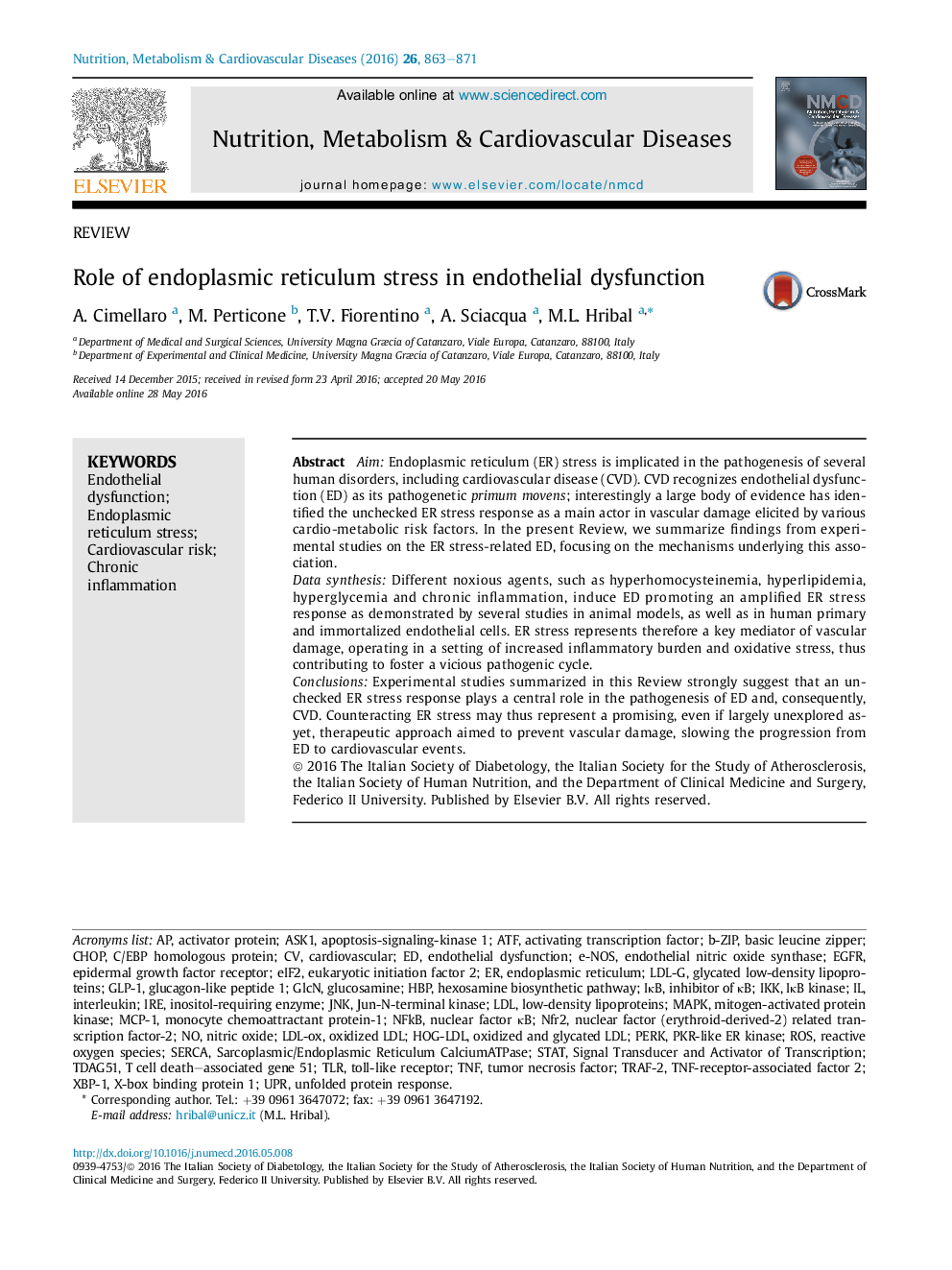| Article ID | Journal | Published Year | Pages | File Type |
|---|---|---|---|---|
| 5619157 | Nutrition, Metabolism and Cardiovascular Diseases | 2016 | 9 Pages |
â¢Endothelial dysfunction (ED) is the primum movens of cardiovascular disease (CVD).â¢Different noxious agents enhance the endoplasmic reticulum (ER) stress response.â¢ER stress represents a unifying molecular mechanism in ED pathogenesis.â¢Counteracting ER stress might represent a therapeutic approach for CVD prevention.
AimEndoplasmic reticulum (ER) stress is implicated in the pathogenesis of several human disorders, including cardiovascular disease (CVD). CVD recognizes endothelial dysfunction (ED) as its pathogenetic primum movens; interestingly a large body of evidence has identified the unchecked ER stress response as a main actor in vascular damage elicited by various cardio-metabolic risk factors. In the present Review, we summarize findings from experimental studies on the ER stress-related ED, focusing on the mechanisms underlying this association.Data synthesisDifferent noxious agents, such as hyperhomocysteinemia, hyperlipidemia, hyperglycemia and chronic inflammation, induce ED promoting an amplified ER stress response as demonstrated by several studies in animal models, as well as in human primary and immortalized endothelial cells. ER stress represents therefore a key mediator of vascular damage, operating in a setting of increased inflammatory burden and oxidative stress, thus contributing to foster a vicious pathogenic cycle.ConclusionsExperimental studies summarized in this Review strongly suggest that an unchecked ER stress response plays a central role in the pathogenesis of ED and, consequently, CVD. Counteracting ER stress may thus represent a promising, even if largely unexplored as-yet, therapeutic approach aimed to prevent vascular damage, slowing the progression from ED to cardiovascular events.
